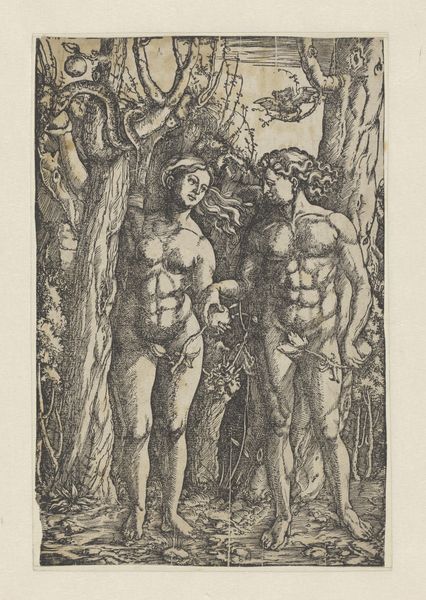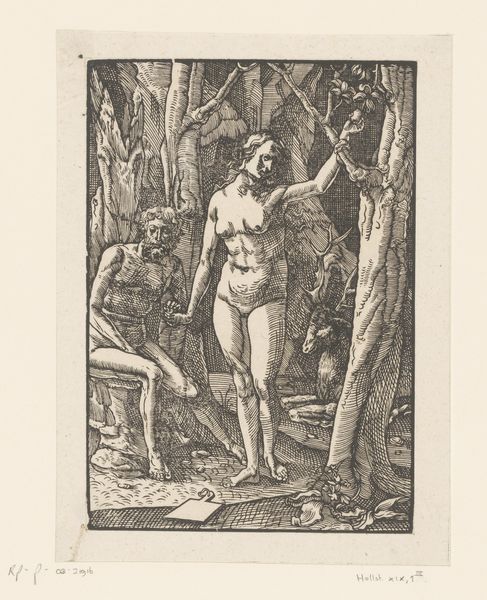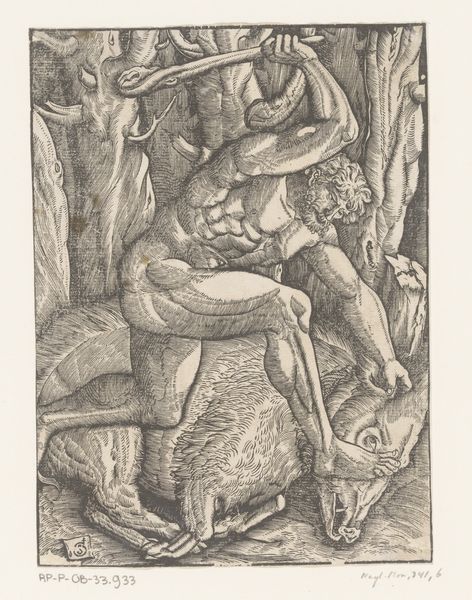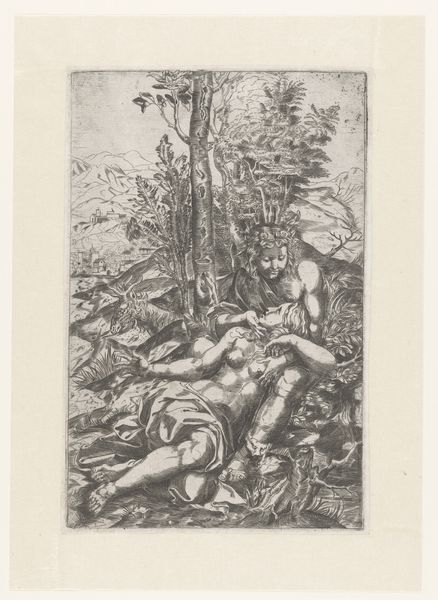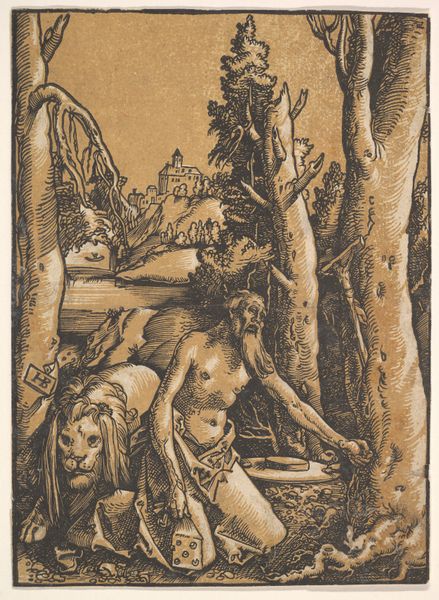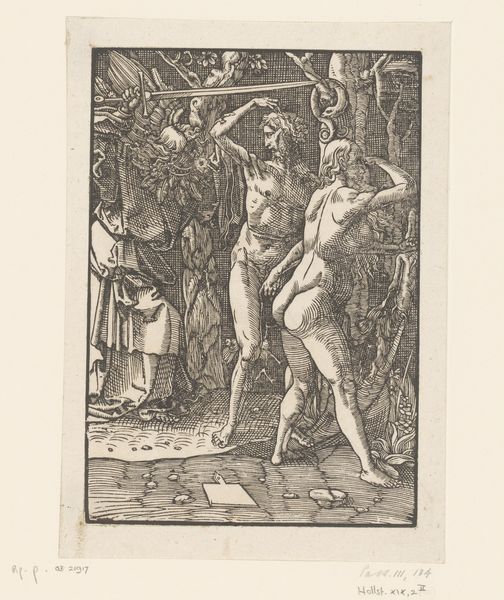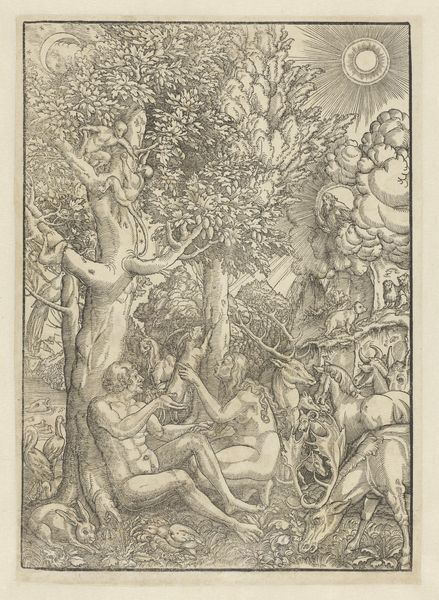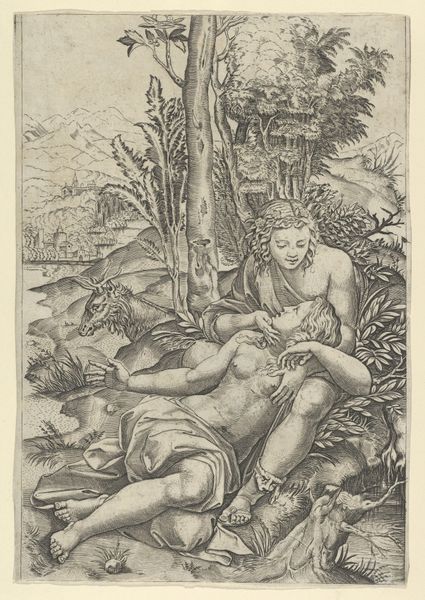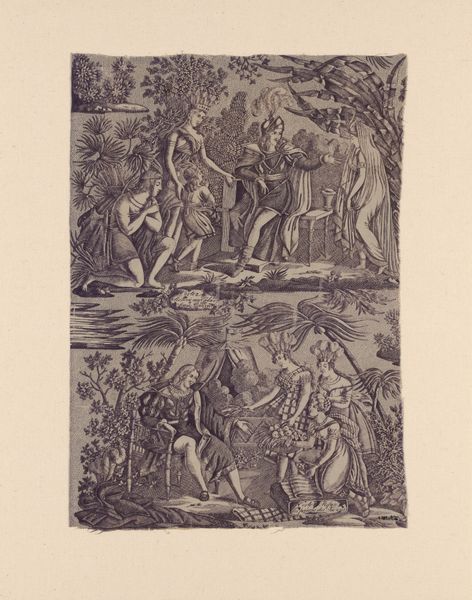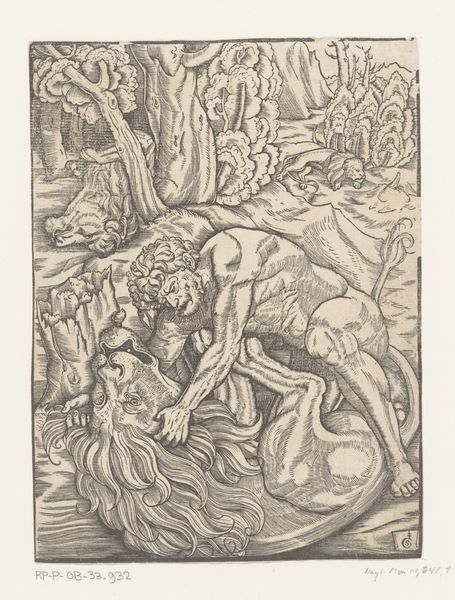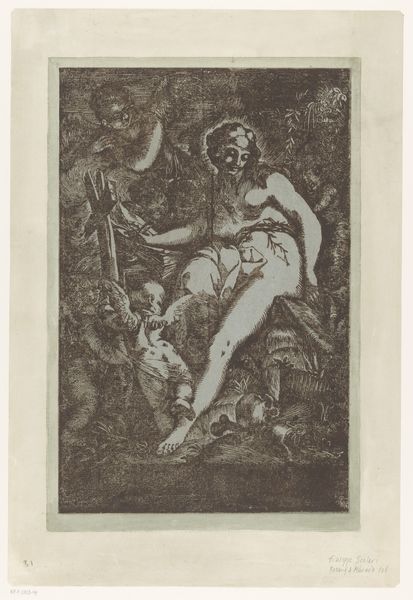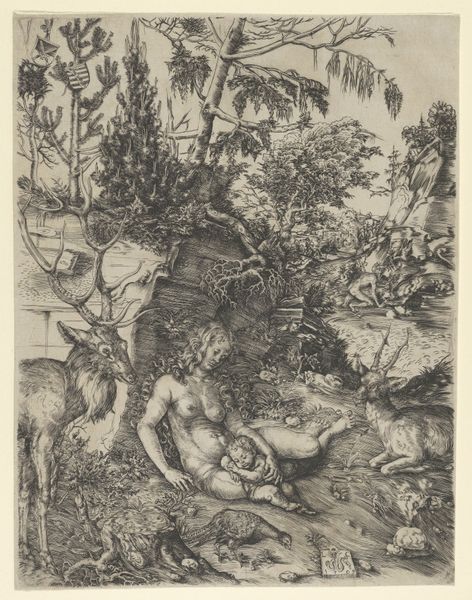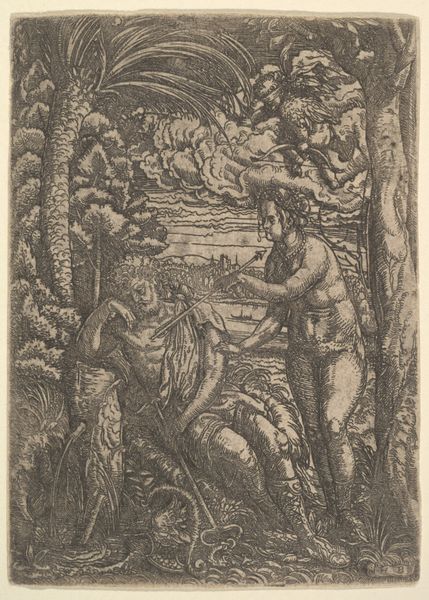
drawing, print, ink, engraving
drawing
ink drawing
allegory
landscape
figuration
ink
history-painting
northern-renaissance
engraving
Dimensions: height 305 mm, width 245 mm
Copyright: Rijks Museum: Open Domain
Editor: So, this print, "Adam and Eve," attributed to Jakob Lucius the Elder, dating sometime between 1540 and 1597. It’s striking how much detail is achieved with just ink, the way he suggests form through cross-hatching… what are your thoughts when you look at this piece? Curator: I’m drawn to the process. Think about the labor involved in producing this engraving. The skill in manipulating the tools to create such a complex image – that's not just art, that's specialized work. Editor: Work, in what way? Curator: Consider the social context of printmaking at that time. It was a craft, a means of mass production. Images like these circulated widely, impacting the consumption of visual narratives and even moral beliefs. Were these prints meant for wealthy patrons, or the growing middle class? What sort of workshop was required to create it? What sort of economy did the production of these prints generate? Editor: That makes me see it differently. I was initially thinking about the symbolism, the narrative of the Fall, but now I’m wondering about the engraver's place in the system. Curator: Exactly. And consider the materiality itself – the ink, the paper, the printing press. These materials dictated the aesthetic in many ways, leading to a distinct style. Do you think a painter in oil on canvas saw this engraver as their equal? Were these items made available in similar venues and under the patronage of similar folks? Editor: I suppose there was likely some hierarchical division of labor. Something about how the prints can be reproduced makes it feel different, almost more accessible, than a unique painting. Curator: It makes you wonder about what happens when you start breaking down the high art/craft divide, doesn't it? Considering the work it took to make, what are your feelings now? Editor: It brings the whole image into a different light – it's not just a representation of a biblical scene, but also a product of very specific historical and material conditions. I have much to think about. Thanks!
Comments
No comments
Be the first to comment and join the conversation on the ultimate creative platform.

